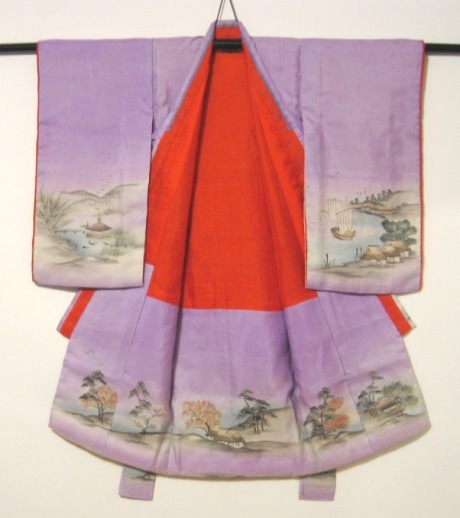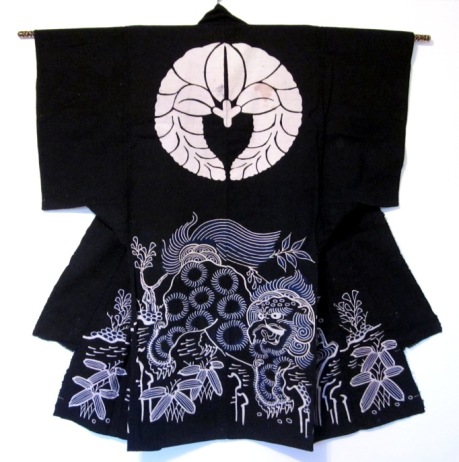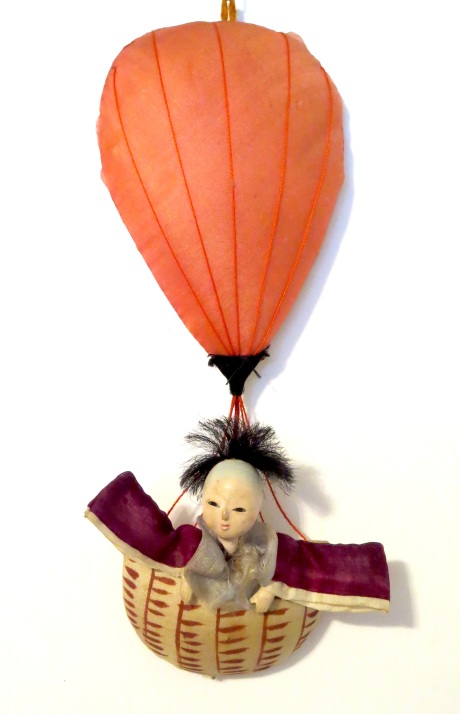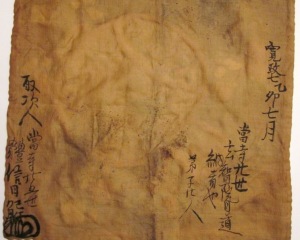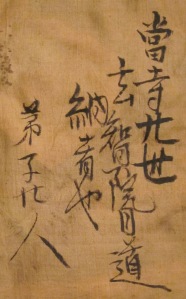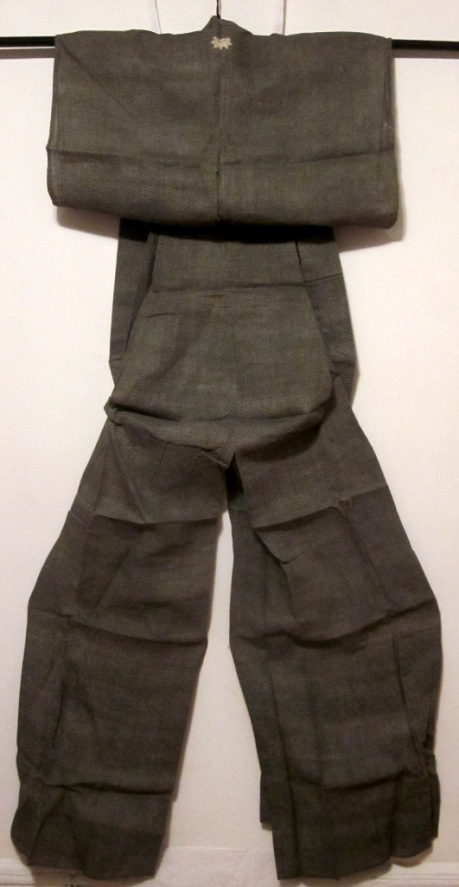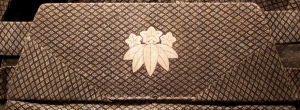DAILY JAPANESE TEXTILE WILL BE SUSPENDED WHILE WE TRY TO FIGURE OUT A TECHNICAL PROBLEM ON THE WORDPRESS PLATFORM.
SORRY FOR THE INCONVENIENCE!
Girl’s Omiyamairi (kimono for presentation to the temple); eight views of Omi
Padded silk
Hand painted surface and lining in sumi, dyes and pigments; rice paste resist
This girl’s omiyamairi (kimono for infant’s first shrine presentation) depicts a well known design motif: the traditional eight views of Omi (present day Lake Biwa). The three most dramatic views are painted on the back, the side most visible to observers. They are the autumn moon on Ishiyama Temple at center back, the evening snow on Mt. Hira on the left sleeve, and the night rain on Karasaki on the right sleeve. The delicate and detailed painting continues not only to the front of the kimono and the elegant padded hem, but to the interior lining of the skirt. There it would have been seen by very few people, and so was a luxurious extra touch. This would have been worn by the new daughter of a wealthy family.
The sleeve on the left side of this photo depicts Miidera (Mii Temple), and the sleeve on the right side depicts the returning boats at Yabase.
This kimono style, with its pale background color, dark-to-light, top-to-bottom shading and realistic designs primarily in sumi concentrated at the base of the material, was very popular close to the turn of the 20th century for both adults and children.
